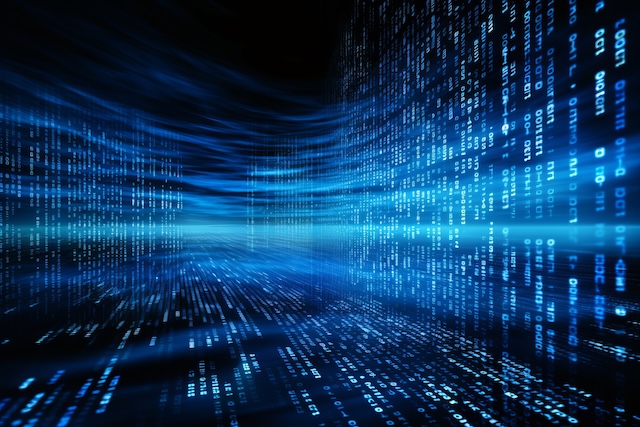
Updatable detection logic refers to the rules, algorithms, and analytic models used by cybersecurity tools and platforms to identify malicious activity—rules that can be rapidly modified, tuned, or replaced without requiring a complete system or software update. Unlike static, hard-coded detection signatures or logic, updatable detection logic is delivered in modular, dynamically loaded components, enabling continuous adaptation to emerging threats and attacker behaviors. In enterprise environments, this agility enables SOC teams, MDR providers, and analysts to respond promptly to emerging threat intelligence, evolving attack surfaces, and sophisticated adversary tactics. For cybersecurity architects, threat intelligence leads, and Fortune 1000 CISOs, updatable detection logic is a key enabler of a resilient, intelligence-driven security posture.
Core Concepts of Updatable Detection Logic
Updatable detection logic is built upon several core concepts that collectively empower agile and responsive threat detection. These foundational ideas include:
- Modularity and Abstraction: Detection logic is organized into discrete rules, signatures, or analytic models (e.g., YARA rules, Sigma rules, or machine learning models) that can be updated independently of the overall security platform.
- Near Real-Time Delivery: Updatable detection logic can be pushed to endpoints, network appliances, or cloud sensors in near real-time, ensuring coverage against emerging threats, zero-day vulnerabilities, and active campaigns as soon as new intelligence becomes available.
- Vendor and Community Collaboration: Many security solutions are designed to accept detection logic updates from multiple sources, including internal threat intelligence teams, MDR providers, and global information sharing communities, thereby enriching enterprise detection capabilities.
- Customizability and Tuning: Updatable detection logic allows organizations to tailor detection for environment-specific risks—such as custom applications, business processes, or compliance mandates—by modifying existing rules or adding new correlational logic to suit local needs.
- Separation from Core Functionality: Detection logic is decoupled from product code, allowing for safe and rapid updates without affecting stability or requiring downtime, which is vital for continuous protection in always-on enterprise environments.
These core concepts ensure that updatable detection logic remains current, adaptive, and relevant within dynamic threat and operational landscapes.
Importance of Updatable Detection Logic for Enterprise Cybersecurity Professionals
Updatable detection logic is of paramount importance for enterprise security teams seeking agility and effectiveness in defense. Its significance to SOC managers, analysts, threat hunters, CISOs, and security architects includes:
- Rapid Threat Response: Security teams can deploy new detection logic immediately upon discovering high-impact threats or TTP shifts, often within hours—or even minutes—of receiving initial intelligence.
- Adaptability to Evolving TTPs: Attackers frequently modify their methodologies to evade static defenses; updatable detection logic enables defenders to stay ahead, closing detection gaps before adversaries can exploit them.
- Operational Efficiency: Instead of waiting for lengthy product or system updates, analysts and MDR providers can distribute focused detection enhancements without interrupting operations, improving mean time-to-detect (MTTD) and mean time-to-respond (MTTR).
- Reduced Dwell Time: By quickly operationalizing new threat intelligence, updatable detection logic minimizes the window of exposure for enterprise assets, reducing attacker dwell time and potential business impact.
- Strategic Control: For large enterprises, updatable detection logic empowers local teams to supplement vendor rulesets with custom content, ensuring alignment with unique business risks and regulatory obligations.
Overall, updatable detection logic transforms security operations from reactive to proactive, supporting both strategic risk management and tactical threat defense.
Technical Overview of How Updatable Detection Logic Works
The operationalization of updatable detection logic within enterprise security stacks involves several technical elements and workflows:
- Detection Rule Management: Detection logic—such as SIEM correlation rules, EDR analytic models, or IDS/IPS signatures—is managed as versioned content, often in standardized formats (e.g., YARA, Sigma, Snort).
- Centralized Distribution: Updates are curated by vendors, threat intelligence teams, or MDR providers and distributed via secure channels (API-driven feeds, encrypted updates) to endpoints, appliances, or cloud sensors.
- Dynamic Loading and Activation: Security tools are architected to dynamically load updated logic at runtime, allowing rule sets or analytic modules to be added, modified, or disabled without agent or system restarts.
- Automated Testing and Validation: New or modified detection logic is typically vetted in sandbox or canary environments, with false-positive/false-negative metrics collected before broad deployment.
- Feedback and Tuning Loop: Detections triggered by new logic produce telemetry and alert feedback, which is reviewed by analysts or automated ML algorithms to refine rules—removing noisy detections or adjusting thresholds as environments and threats change.
This technical foundation supports the continuous, safe, and efficient deployment of evolving detection capabilities across the enterprise ecosystem.
Applications and Use Cases of Updatable Detection Logic
Updatable detection logic supports a variety of mission-critical use cases for Fortune 1000 organizations and managed security providers:
- Combatting Zero-Day Threats: As soon as a zero-day exploit or in-the-wild campaign is identified, detection logic can be updated globally to identify attacker behaviors or artifacts, even before antivirus vendors release engine updates.
- Tailored Threat Defense: Enterprises can rapidly deploy logic for sector-specific threats (e.g., financial malware, healthcare ransomware) or locally observed attack patterns, aligning defense with real business risks.
- Incident Response and Forensic Enhancement: During a major incident, custom rules can be implemented to identify specific attacker lateral movement or data staging activities, supporting focused, high-fidelity investigations.
- Compliance-Driven Adjustments: Security teams can update detection logic to track compliance violations (such as GDPR or HIPAA data access), ensuring ongoing regulatory alignment.
- Collaboration and Threat Intelligence Sharing: MDR and security community platforms disseminate new detection logic based on shared intelligence, enabling collaborative defense against rapidly evolving threats.
These examples highlight the operational flexibility and tactical value of updatable detection logic in contemporary security programs.
Best Practices When Implementing Updatable Detection Logic
To maximize the effectiveness of updatable detection logic, enterprises should adopt the following best practices:
- Establish Rigorous Validation Processes: Ensure new or modified detection logic is thoroughly tested to minimize false positives—ideally within a staged rollout framework or using canary deployments before production activation.
- Automate Rule Distribution and Version Control: Leverage centralized management systems to automate logic distribution, maintain version history, and allow rapid rollback in the event of issues.
- Foster Threat Intelligence Integration: Connect detection engines with real-time intelligence feeds, both commercial and community-driven, to maintain continuous coverage and operationalize fresh threat intelligence.
- Enable Customization and Local Tuning: Empower SOC and threat hunting teams to develop, test, and deploy local detection rules that address unique risks, rather than relying solely on vendor-provided content.
- Monitor and Audit Detection Performance: Continuously track detection efficacy, alert volume, and incident outcomes to refine and optimize detection logic over time, maintaining a balance between coverage and noise.
Adhering to these practices helps organizations maintain responsive, high-quality detection while minimizing disruption and alert fatigue.
Limitations and Considerations for Updatable Detection Logic
While updatable detection logic offers clear advantages, there are significant limitations and considerations:
- Potential for False Positives: Rapidly deployed or poorly validated detection rules can overwhelm analysts with noise, impeding incident triage and response.
- Change Management Complexity: Frequent updates require mature processes for version control, rollback, and documentation to avoid operational confusion or missed detections.
- Resource and Skill Requirements: Effective management of custom, updatable detection logic demands skilled analysts, robust process discipline, and toolsets with granular visibility and control.
- Vendor Lock-in Risks: Some platforms may limit customization of detection logic or require proprietary formats, making it more difficult to standardize or share detection content across heterogeneous environments.
- Security and Integrity of Updates: The process for distributing and applying detection logic updates must be secure to prevent malicious tampering or supply chain attacks.
These considerations underscore the importance of disciplined, well-governed detection logic management in large-scale security operations.
Emerging Trends and the Future of Updatable Detection Logic
Updatable detection logic is rapidly evolving in line with broader security and technology advancements:
- Machine Learning-Driven Detection Updates: Security vendors and MDR providers are leveraging AI to generate and refine detection logic based on large-scale data analysis, automatically adapting to new TTPs.
- Community-Curated Detection Content: Open-source initiatives (such as Sigma, YARA, and rules repositories) are accelerating the sharing and crowd-sourcing of detection rules, increasing community resilience.
- Integration with SOAR and Automated Response: Updatable detection logic is increasingly linked with security orchestration, automation, and response platforms, enabling rule-driven automated containment and remediation flows.
- Cloud-Native and API-Driven Delivery: As environments migrate to cloud and hybrid models, detection logic updates are delivered as code, APIs, and modular cloud services, supporting real-time adaptation and scalability.
- Behavioral and TTP-Focused Logic: Detection content is shifting from static signatures towards behavioral and indicators-of-behavior (IoB) logic, increasing coverage against evasive, context-dependent threats.
These trends signal a future in which updatable detection logic becomes even more dynamic, intelligent, and community-driven—forming a foundational pillar of adaptive enterprise cyber defense.
Conclusion
Updatable detection logic is a transformative enabler for agile and effective enterprise threat detection. Decoupling detection content from platform code allows rapid, targeted adaptation to new threats, aligning defense with the pace of modern attacker innovation. For Fortune 1000 security teams, updatable detection logic supports fast incident response, custom detection capabilities, and continuous regulatory alignment. Its successful operationalization requires mature validation, versioning, and integration processes—but the payoffs in reduced dwell time, increased detection fidelity, and minimized business risk are substantial. As detection logic generation, testing, and deployment continue to evolve, organizations leveraging updatable detection logic will be best positioned to stay ahead of adversaries in a dynamic risk landscape.
Deepwatch® is the pioneer of AI- and human-driven cyber resilience. By combining AI, security data, intelligence, and human expertise, the Deepwatch Platform helps organizations reduce risk through early and precise threat detection and remediation. Ready to Become Cyber Resilient? Meet with our managed security experts to discuss your use cases, technology, and pain points, and learn how Deepwatch can help.
Related Content
- Move Beyond Detection and Response to Accelerate Cyber Resilience: This resource explores how security operations teams can evolve beyond reactive detection and response toward proactive, adaptive resilience strategies. It outlines methods to reduce dwell time, accelerate threat mitigation, and align SOC capabilities with business continuity goals.
- The Hybrid Security Approach to Cyber Resilience: This white paper introduces a hybrid model that combines human expertise with automation to enhance cyber resilience across complex enterprise environments. It highlights how integrated intelligence and flexible service models can optimize threat detection and response efficiency.
- 2024 Deepwatch Adversary Tactics & Intelligence Annual Threat Report: The 2024 threat report offers an in-depth analysis of evolving adversary tactics, including keylogging, credential theft, and the use of remote access tools. It provides actionable intelligence, MITRE ATT&CK mapping, and insights into the behaviors of threat actors targeting enterprise networks.
